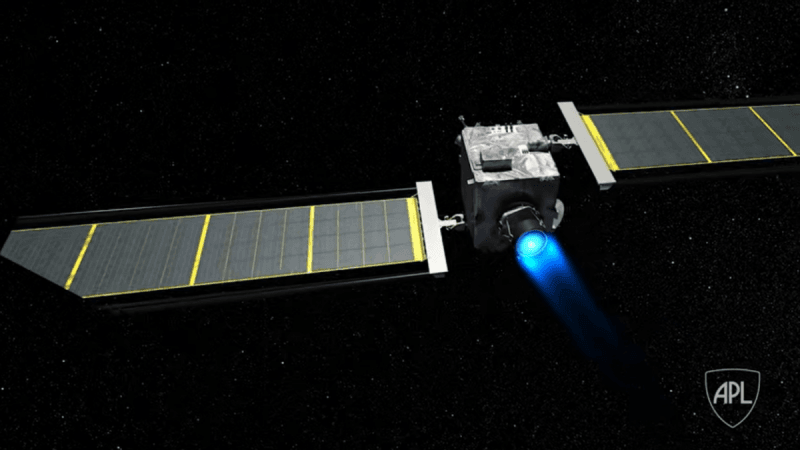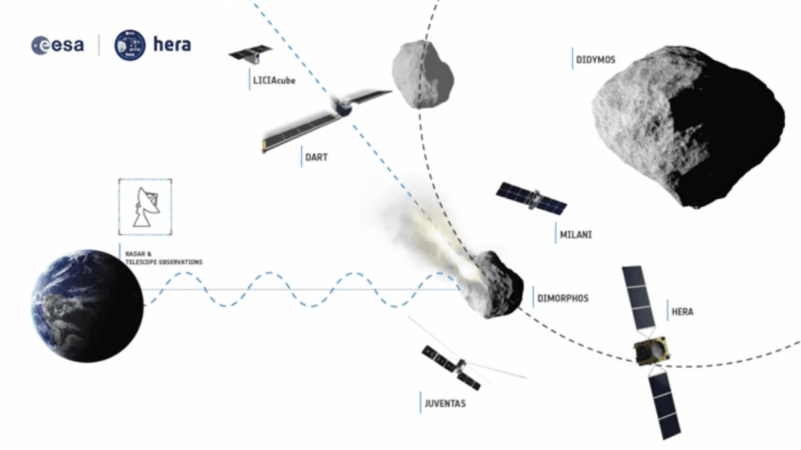NASA's Double Asteroid Redirection Test, or DART, will launch from Vandenberg Space Force Base in California on November 23 at 10:20 p.m. PT on a SpaceX Falcon 9 rocket.
Dimorphos, a tiny moon circling the near-Earth asteroid Didymos, is the focus of this asteroid deflection technique. Dimorphos was selected for this mission due to its size in comparison to asteroids that may pose a hazard to Earth.

The mission
NASA will test its asteroid deflection device in September 2022, after launching it in November. Didymos and Dimorphos will pass within 11 million kilometres of Earth in September 2022. It is the ideal moment for the DART mission to take place.
Dimorphos should orbit Didymos faster after the collision, showing the kinetic impactor approach works.
LICIACube, an Italian Space Agency CubeSat, will record the collision. The CubeSat will be launched from DART before the collision to capture what happens. DART will collide with Dimorphos at 14,763.8 mph. DART's DRACO camera and self-navigating algorithms will enable it to find and strike into Dimorphos.
The European Space Agency's Hera project will perform a follow-up examination of Didymos and Dimorphos a few years after the collision.
In a statement, NASA programme chief Andrea Riley said DART is a first step in evaluating strategies for dangerous asteroid deflection. "We are delighted to be collaborating with our Italian and European colleagues to obtain the most precise information possible from this kinetic impact deflection experiment," she said.

DART mechanism
DART is a mini spacecraft. Its core is a meter-wide box with two roll-out solar panels that give it a 12-metre breadth. DART's electric propulsion technology creates a mild yet constant thrust. Its only scientific equipment is a high-resolution camera named DRACO, which also serves as a navigation instrument.
The spacecraft will make several orbits around Earth, utilising its electric propulsion to achieve the necessary speed to escape orbit. It will then travel to Didymos, perhaps passing some other asteroid called 2001 CB21 en route.
Four hours prior to the collision, the primary spacecraft will enter an autonomous navigation state. DRACO images will aid the spacecraft's computer in determining the difference between Didymos and Dimorphos and directing the probe toward the latter.

















